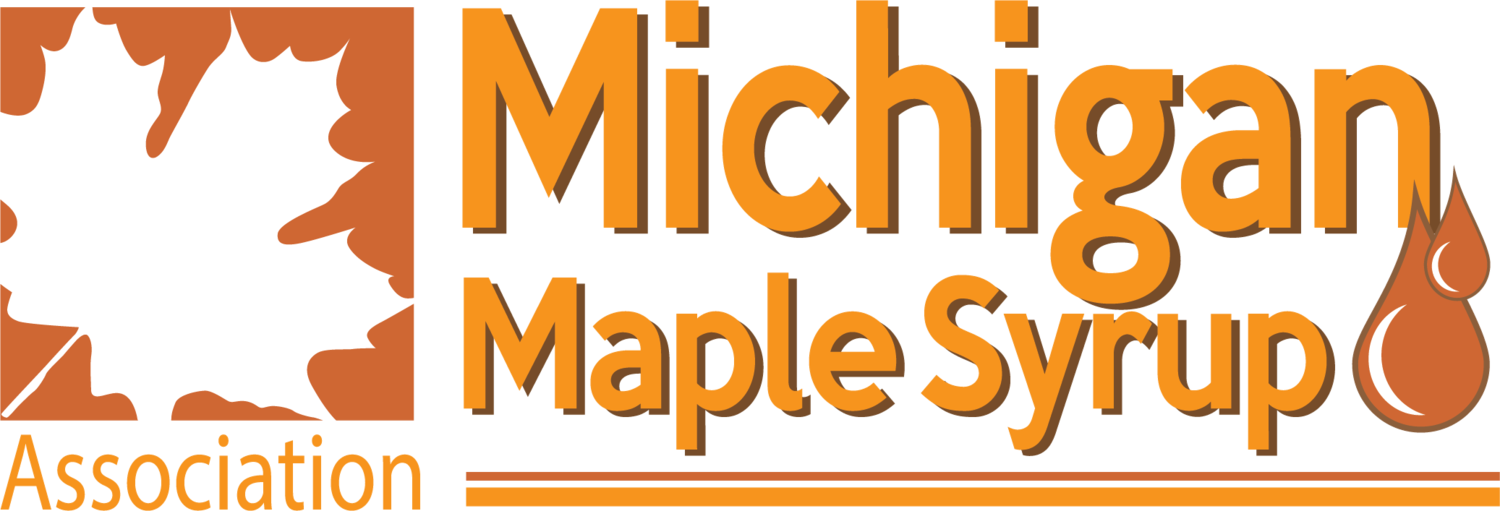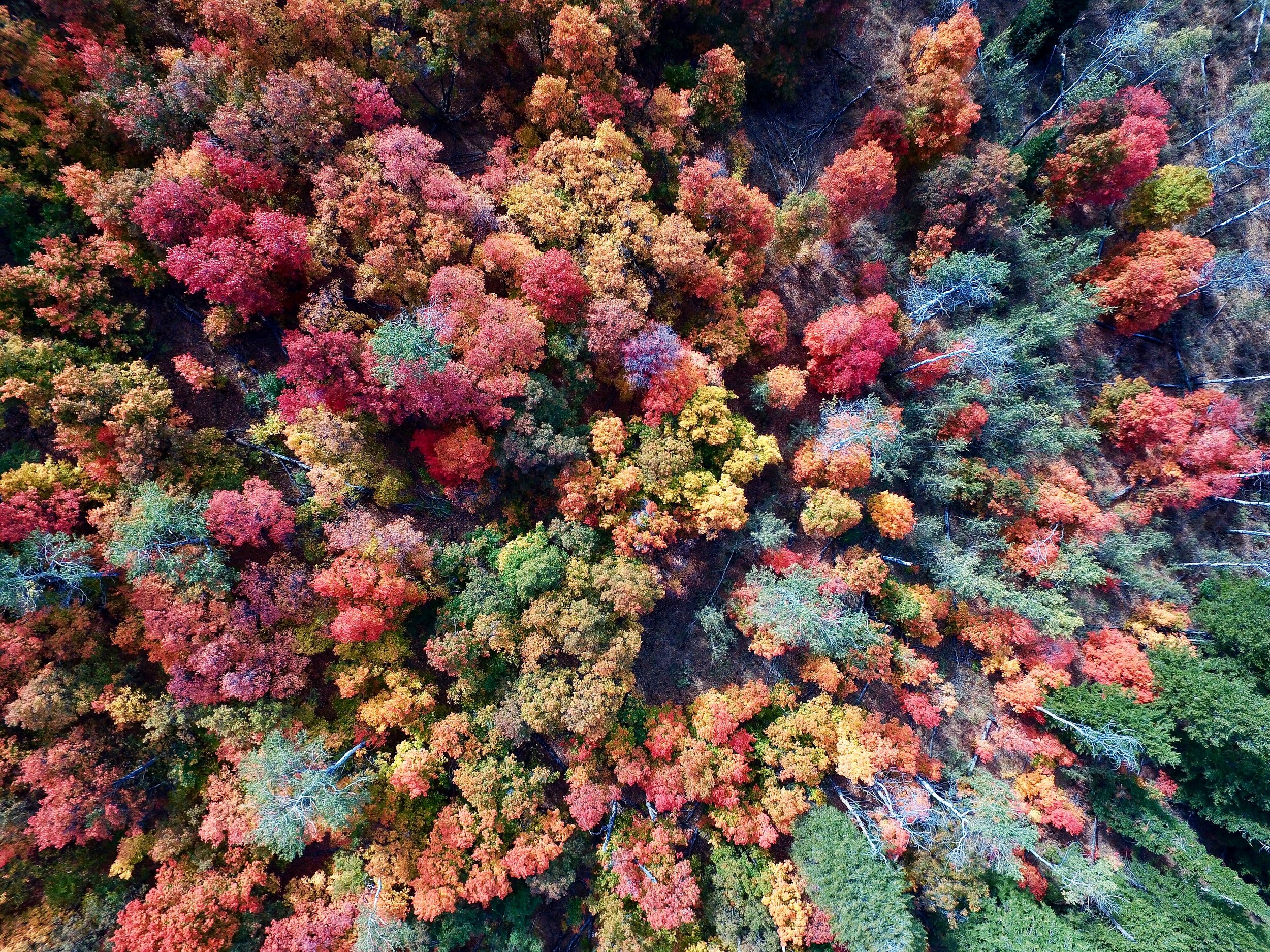Homemade Maple Syrup
By Mel Koelling, Forestry Dept.
Several species of maple trees grow in Michigan. Though all produce sap suitable for the production of maple syrup, two species of sugar maple (acer saccharum) and black maple (acer nigrum), are the source of sap for most commercial maple production. Sap suitable for conversion into syrup may also be obtained from red and silver maples, though such sap usually has a lower sugar content.
Sugar maple is a common tree throughout most of Michigan. Its greatest concentration in forest stands occurs in the western and northern portions of the state. In addition to its use for sap production, sugar maple is a valuable tree for lumber and is used extensively in fine furniture, It has been widely planted as a shade and ornamental tree.
EQUIPMENT NECESSARY
Maple syrup can be produced with a minimum of equipment, but a few standard items increase the efficiency of the operation and the quality of the product:
A drill with a 5/16-inch bit for drilling tap-holes in trees.
A metal or plastic collection spout for each tap-hole.
A collection container (bucket or plastic bag) or tubing line for each tap-hole.
A large pan and a heat source for boiling down the sap. The size needed will depend on how much sap you intend to handle.
A large-scale thermometer calibrated at least 15 degrees above the boiling point of water.
Wool, orlon or other filters for filtering finished syrup while hot.
Storage facilities and containers for the finished syrup.
TAPPING THE TREE
To obtain the earliest runs of sap, tapping should be completed by the middle of February in lower Michigan and by the first week of March in the northern portion of the state. Minimal trunk diameter for trees suitable for tapping is 10 inches at 4 feet above the ground.
To tap a tree, select a spot on the trunk of the tree 2 to 4 feet above the ground in an area that appears to contain sound wood. At this point, drill a hole approximately 2 to 2.5 inches deep into the wood. Then insert a collection spout and tap lightly into the tree, and attach a bucket or plastic bag or a tubing line to the spout. Open buckets used for sap collection should be covered to keep out rainwater, debris, insects and other foreign materials.
COLLECTING THE SAP
Sap flow in maple trees will not occur every day throughout the tapping season. It occurs when a rapid warming trend in early to mid-morning follows a cool (below freezing) night. Thus, the amount of sap produced varies from day to day. Normally, a single tap-hole produces from a quart to a gallon of sap per flow period (from a few hours to a day or more), with a seasonal accumulation of 10 to 12 gallons per tap-hole likely.
To produce high quality syrup, sap collections should be made as required, not exceeding every two or three days. If this is not possible, collections obtained from prolonged flow periods should be stored and processed separately. During periods of rather low temperatures and under favorable storage conditions, sap may be kept four or five days without reducing syrup quality.
The amount of sap required to produce a gallon of maple syrup varies, depending on its sugar concentration. Sap averages approximately 2 percent sugar. At this concentration, 43 gallons of sap are required to produce 1 gallon of syrup. If the sap contains a higher sugar concentration, less sap will be required.
Producing maple syrup is essentially a matter of concentrating the sugar solution to a predetermined level through evaporation. Heat is used to concentrate the sap and to develop the characteristic maple color and flavor that make maple syrup so highly desirable.
In large commercial operations, a continuous feed evaporation process is used. That is, the evaporation pan is arranged so that sap may be continuously added and syrup drawn off. In smaller operations, a "batch" approach is used. The evaporation pan is filled with sap and sap is added as necessary to replace that lost by evaporation. When a suitable amount of concentrated sap is present, the pan is "finished-off" to produce syrup of the correct density.
To begin evaporation, fill the evaporating container (preferably a large shallow pan) with sap. Begin heating the sap to the boiling point, taking care not to burn or scorch the sap. (A Teflon-coated pan is ideal.) As evaporation lowers the level of sap in the pan, add more sap. Continue this process until most of the sap in the pan is highly concentrated and the boiling point of the sap begins to rise above the boiling point of water.
Throughout this process, it may be necessary occasionally to skim the surface of the boiling liquid to remove surface foam and other materials. Finished syrup boils at 7 degrees above the boiling point of water. As the temperature of the boiling sap approaches this point, boiling should be carefully controlled to prevent burning and overheating.
Once the desired boiling point has been reached, the syrup is ready for filtering and packaging. Hot syrup should be filtered through a suitable filter of wool or orlon to remove suspended particles, such as sugar sand, and improve the appearance of the syrup. After filtering, the syrup should be packaged, also while hot. A temperature of at least 180 degrees F is necessary to prevent spoiling while in storage.
OTHER MAPLE PRODUCTS
Maple syrup may be used as is, of course, or it may be converted into other highly desirable products. Maple sugar, maple candy and maple fudge are just a few of the many other maple products. Basically, these are made by concentrating finished syrup to a greater density and stirring the highly concentrated syrup. Recipes for a variety of maple products may be obtained by contacting the local county Extension office or by writing to the Department of Forestry at Michigan State University.
Maple syrup and sugar are among the oldest agricultural commodities produced in the United States. Native Americans are generally credited with discovering how to convert maple sap into maple syrup. The importance of maple products for local trade was established well before the arrival of the first European settlers in North America. Maple syrup production is confined to the northeastern portion of the United States, with the largest amounts produced in Vermont and New York. Until rather recently, maple syrup and sugar have been strictly a "sideline" farm crop; however, the production of maple syrup and other maple products is often a full-time operation. Maple syrup is one agricultural crop in which there is no surplus. In fact, demand far exceeds the available supply. The industry is not expanding, even though less than 1 percent of the potential resource is being used.
Courtesy of Michigan State University Extension


